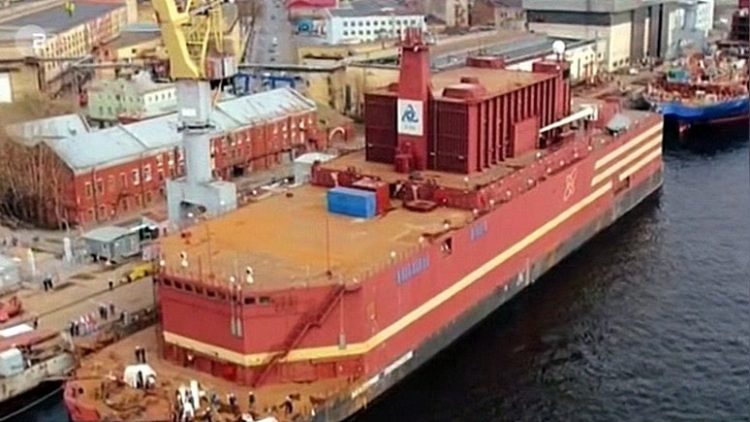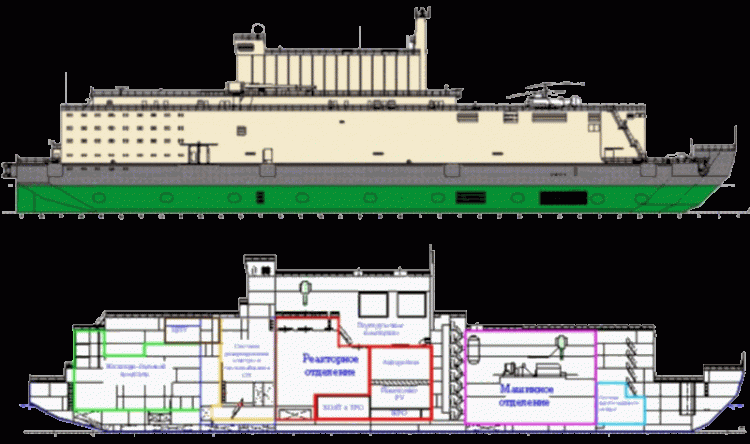While countries like Germany or on track to completely phase out nuclear power plants by 2022, Russia’s is building more of them and even making them floatable so they can provide power to remote areas. However, not everyone is convinced that placing a powerful nuclear reactor on a ship is such a good idea.
Looking exactly like what you would imagine a floating power plant to look like, the Akademik Lomonosov is certainly an impressive sight to behold. Its mission, to provide power to in remote regions of Russia’s extreme north and far east, is also quite interesting, as it allows Russia to significantly cut costs by just moving the ship to where it is needed, instead of moving machinery out by land. If everything goes according to plan, the Lomonosov should prove a great asset to Russia, but environmentalists and nuclear experts are worried that in case of a natural disaster, it could cause an environmental catastrophe.

Photo: video screengrab
Built by state-controlled nuclear company Rosatom, the Akademik Lomonosov’s 48MW reactor was supposed to be loaded with nuclear fuel right in the Sankt Petersburg shipyard where it was constructed, but due to safety concerns, it will instead be towed to the Arctic for testing.
“To test a nuclear reactor in a densely populated area like the centre of St. Petersburg is irresponsible to say the least,” said Greenpeace nuclear expert for central and Eastern Europe, Jan Haverkamp. “However, moving the testing of this ‘nuclear Titanic’ away from the public eye will not make it less so.”
Haverkamp and others are worried than in case of a tsunami or other extreme weather conditions, the Akademik Lomonsosov could become another Chernobyl and cause great damage to the Arctic environment, which is already under great pressure.

“The floating nuclear power plants will typically be put to use near coastlines and shallow water … contrary to claims regarding safety, the flat-bottomed hull and the floating nuclear power plant’s lack of self-propulsion makes it particularly vulnerable to tsunamis and cyclones,” Jan Haverkamp said.
However, Rosatom claims that the Akademik Lomonosov is virtually impervious to tsunamis and other natural disasters and that all safety measures have been taken to prevent a nuclear catastrophe.
“The Lomonosov is designed with the great margin of safety that exceeds all possible threats and makes nuclear reactors invincible for tsunamis and other natural disasters,” the company said in a statement. “In addition, the nuclear processes at the floating power unit meet all requirements of the International Atomic Energy Agency(IAEA) and do not pose any threat to the environment.”
Russian state media has announced that a second floating nuclear power plant is scheduled for completion in 2019, and has suggested that such ships could be marketed to other countries in the future.
Interestingly, the Akademik Lomonosov is not the world’s first floating nuclear power plant. That title belongs to the Sturgis, US Army barge that was installed in Panama during the Vietnam War. It was fitted with a 10MW nuclear reactor and provided electricity in the area until 1976. It was decontaminated and prepared for long-term storage in 1977, but the dismantling process is still taking place 40 years later, due to the intense radiation levels.
Sources: The Independent, Ars Technica






